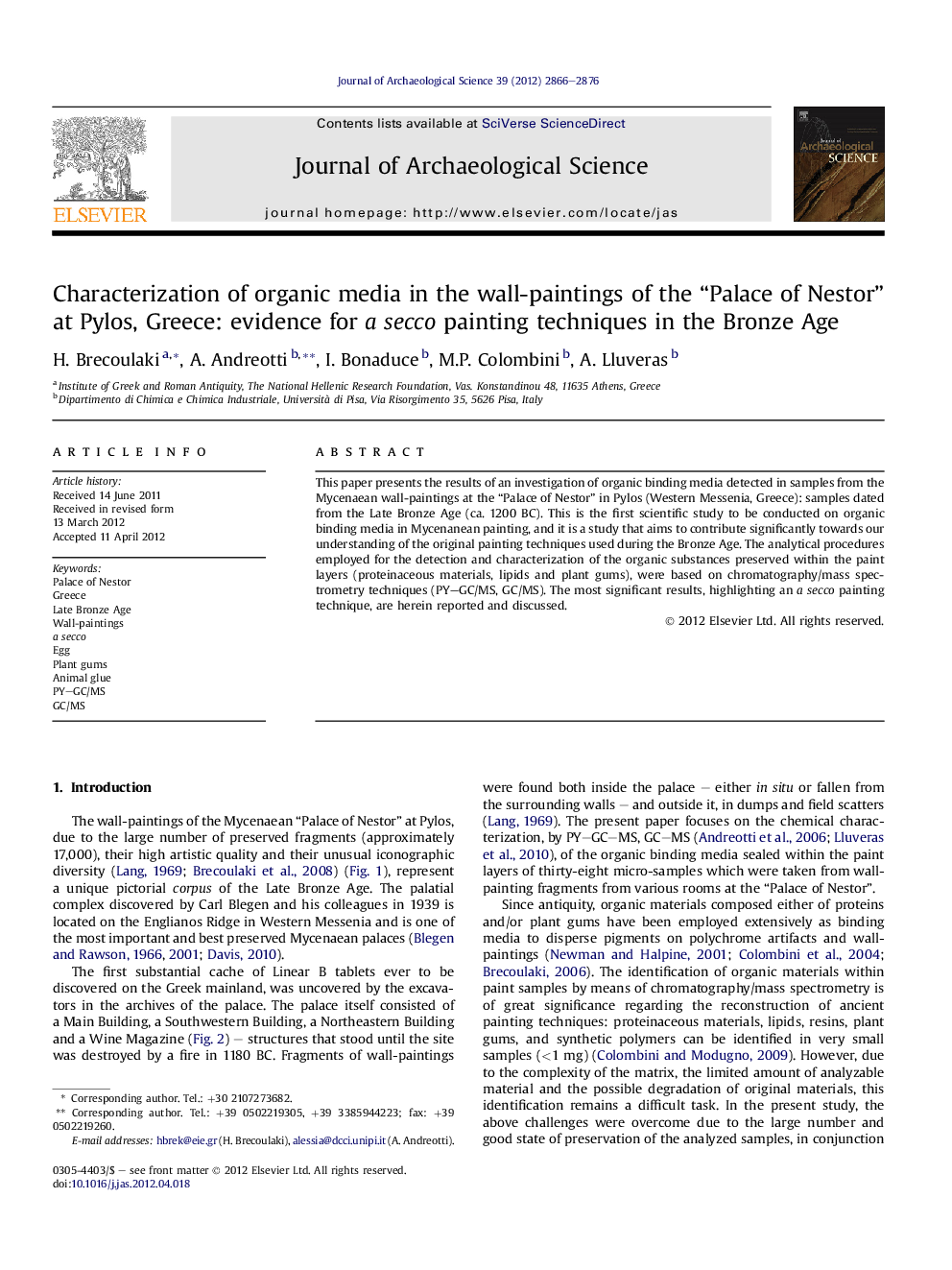| Article ID | Journal | Published Year | Pages | File Type |
|---|---|---|---|---|
| 1035790 | Journal of Archaeological Science | 2012 | 11 Pages |
This paper presents the results of an investigation of organic binding media detected in samples from the Mycenaean wall-paintings at the “Palace of Nestor” in Pylos (Western Messenia, Greece): samples dated from the Late Bronze Age (ca. 1200 BC). This is the first scientific study to be conducted on organic binding media in Mycenanean painting, and it is a study that aims to contribute significantly towards our understanding of the original painting techniques used during the Bronze Age. The analytical procedures employed for the detection and characterization of the organic substances preserved within the paint layers (proteinaceous materials, lipids and plant gums), were based on chromatography/mass spectrometry techniques (PY–GC/MS, GC/MS). The most significant results, highlighting an a secco painting technique, are herein reported and discussed.
► Chromatography/mass spectrometry techniques for the identification of ancient binding media. ► Identification of egg, animal glue and plant gums at the Mycenaean Palace at Pylos. ► Combined use of various binding media. ► Confirmation of the practice of tempera and a secco painting techniques in the Bronze Age, Greece. ► Affinities with Egyptian painting techniques.
